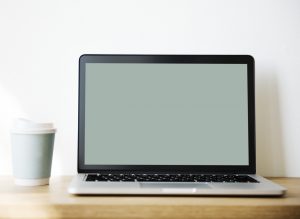Do’s and Don’ts of Cleaning Electronics
How many people think about cleaning electronics? You use them every day, and some devices have even become an integral part of life such as laptops, phones, and headphones. Your homes are squeaky clean, but when was the last time you took a good look at your gadgets and appliances? Just bring your phone closer to the eye and check the display, corners, and crevices. Ew!
The truth is even scarier. The electronics have dirt, and they are more ick-infested than the toilet seats in public restrooms! Several studies have found that the household toilet seats have 50 to 300 bacteria per square in an average while it is more than 1,000 in public lavatories. Your handheld devices harbor even more!
What is the right way of cleaning electronics to remove the dirt and germs? Well, cleaning a computer is totally different than mopping the floor or washing the dishes. Electronics are sensitive devices, and you can damage or ruin them by following the wrong procedure or using harsh cleaning agents.
The Do’s and Don’ts of Cleaning Electronics
Keeping all your expensive gadgets in tip-top condition is vital for their proper function and stopping the spread of diseases. However, you can’t just spray a cleaner on them and rub with a paper towel. Also, the maintenance and cleaning procedures will be different depending on the device types. Let’s see the proper ways of dusting and wiping some household items and commonly-used gadgets.
Laptops and Notebooks
 The keyboard houses all manner of dirt and germs, from food crumbs to sticky fingerprints, dead skin, and drink spills, thanks to the tiny crevices between the keys. You transfer these dirt particles to your body and other places every time you use the coffee machine, grab the snacks, or rub your eyes after using the laptop.
The keyboard houses all manner of dirt and germs, from food crumbs to sticky fingerprints, dead skin, and drink spills, thanks to the tiny crevices between the keys. You transfer these dirt particles to your body and other places every time you use the coffee machine, grab the snacks, or rub your eyes after using the laptop.
Do’s:
- The laptop should be turned off before cleaning the monitor and other parts. In case if you use an extra keyboard, unplug or turn it off.
- Spray cleaning solution on a microfiber towel to wipe down your screen, mouse, and other flat surfaces. The rubbing pattern should be from left to right. It will make the dust particles come off easily without scratching the surface.
- Turn the open laptop upside down (or the keyboard if it’s separate) and shake off particles trapped between the keys. Then, use a soft brush to dust off. A can of compressed air or a small vacuum cleaner (designed for dusting small electronics) can force out the dirt between the keys. You can use the vacuum to clean the cable and USB ports of the laptop and the crevices inside the mouse.
- Rub the keyboard with a cleaner-dipped microfiber cloth because some keys such as the space bar and Enter become grubby due to frequent use.
- A cleaning agent like Mr. Clean Magic Eraser will do wonder for an oily keyboard. However, if you have never cleaned it after buying, open the screws with a screwdriver, pop out the keys and scrub with a toothbrush.
- Do the cleaning at least once in a month.
Don’ts:
- Don’t use a regular vacuum cleaner for the keyboard. The suction force is so powerful that it will pull off the keys and damage the internal components.
- Don’t spray the cleaner directly on the screen or keyboard.
- Never turn on the laptop if it is not completely dry.
- Get rid of the habit of eating at your desk.
Smartphones and Tablets
 Do you use them in the toilets? Well, everybody does, and that’s the reason why they are the harboring grounds for germs viler than the ones found in a toilet seat. Besides, can you remember when the last time you have cleaned it? I guess not.
Do you use them in the toilets? Well, everybody does, and that’s the reason why they are the harboring grounds for germs viler than the ones found in a toilet seat. Besides, can you remember when the last time you have cleaned it? I guess not.
Do’s:
- Wipe them thoroughly with a microfiber cloth every other day. It will keep the grease, dirt, and sweat away.
- The internal components need a thorough cleaning too. Use a soft brush to dust them off.
- Do a deep cleaning every other week. A disinfecting cleaning agent or the mixture of vinegar and water is the right solution to eradicate the germs. Use a soft cloth to rub the exterior while a cotton bud will make it easier to reach the corners and crevices.
- Soak the silicone covers of these gadgets in lukewarm water mixed with a few drops of liquid dish soap. Wiping with a cleaning solution will be enough for plastic covers.
- When you’re done with cleaning, leave the phone to dry completely before turning it on again.
Don’ts:
- Direct spraying of a liquid cleaning solution is strictly prohibited. Moisture or drops of the solution may get inside and damage the internal circuits.
- Never use a hair dryer to dry up the gadgets. Electronics are sensitive, and the direct application of hot air can damage their delicate components.
- Don’t clean the inside when the device is on. Switch it off and remove the sim card and battery.
LCD Screens
 How often do you clean the PC monitor or the HD flat TV? Occasional wiping with a piece of cloth is not enough. Take a close look, and you will see all sorts of dust particles and little splotches that don’t go away with one or two streaks.
How often do you clean the PC monitor or the HD flat TV? Occasional wiping with a piece of cloth is not enough. Take a close look, and you will see all sorts of dust particles and little splotches that don’t go away with one or two streaks.
Do’s:
- Turn the display off for better visibility of the dirty spots. Wipe it (from left to right) with a clean, soft microfiber towel. You may pour a few water drops on the towel before the wiping.
- Apply a high-quality monitor cleaner or diluted white vinegar (a 50/50 mix of water and white vinegar) to remove the stubborn spots, oily fingerprints, and greasy patches. Tap water is likely to have salt and other deposits that can leave white patches on the screen. Using distilled water will solve this problem.
- Wait for the screens to dry completely before switching them on.
Don’ts:
- Cleaning electronics requires utmost care because these are sophisticated devices. You should be even more careful with LCD displays since they are pretty delicate. Don’t press hard while wiping or scrubbing as it will burn out the pixels.
- Always use a microfiber towel or a soft cloth. Avoid everything that is paper-based such as tissue paper, or kitchen towel since it can scratch up your monitor.
- Remember not to spray the solution on the display. Apply it to the cloth, which you can use to rub the screen.
Digital Cameras
 You were on a vacation, shot some great photos that you think can end up on the National Geographic cover, only to find that the lens was dirty. Also, we expose the camera to all types of outdoor environments and pass to other people to show them photos – making it a fertile ground for germs. Keeping it clean is the only solution to avoid these annoying problems. You should clean it after every outdoor trip. Also, cleaning electronics like these devices are necessary to keep them functioning.
You were on a vacation, shot some great photos that you think can end up on the National Geographic cover, only to find that the lens was dirty. Also, we expose the camera to all types of outdoor environments and pass to other people to show them photos – making it a fertile ground for germs. Keeping it clean is the only solution to avoid these annoying problems. You should clean it after every outdoor trip. Also, cleaning electronics like these devices are necessary to keep them functioning.
Do’s:
- Pour a few drops of water into a clean piece of cloth and wipe the camera’s exterior body.
- You have to brush the interior too. Remove the battery and memory card, and then use a soft brush (a makeup brush will be fine too) to sweep the dirt trapped inside these slots. Use the same brush to dust off the crevices around the external buttons and control knobs.
- Cleaning the lens is a bit tricky. Hold a lens blower close to the lens surface without touching it and blow a couple of quick puffs to remove the dust. Use a lens brush with soft, fine bristles to give it another round of cleaning work.
- If the lens is really dirty, you can also apply lens-cleaning fluid. Spray it on a cloth or tissue especially designed for cleaning the lens and then wipe the surface. Use a lens-cleaning paper tissue to wipe the surface dry.
- Apply the same procedures for the lens filters.
Don’ts:
- Avoid using detergents because they are harsh and can ruin the delicate components in a camera.
- You should not wipe the lens and lens filter with a plain cloth since it can scratch these expensive tools and ruin them.
- If you are not an expert, don’t clean the lenses by yourself since these are costly and delicate. Take them to a camera servicing shop to get professional help.
Earphones and Headphones
 Some people use them all the time even when they are in the bed at night. However, the constant use makes sweat and dirt gather around the earbuds and earpads. These spots turn into a live transit station for bacteria and cause skin infections.
Some people use them all the time even when they are in the bed at night. However, the constant use makes sweat and dirt gather around the earbuds and earpads. These spots turn into a live transit station for bacteria and cause skin infections.
Do’s:
- Dip a small piece of cloth in plain or soapy water and wipe the headphones. Cotton swabs will be the best option for tiny earbuds and various apertures of headphones.
- Remove the silicone buds and clean the internal parts with an old brush or toothbrush.
Don’t:
- Wring the cloth after soaking in soapy water and then wipe the headphones.
- Wait for some time to dry.
- Don’t share earphones with others.
Conclusion
These do’s and don’ts for cleaning electronics cover those devices that we use daily. You can apply these basic techniques for other similar types of gadgets. Your expensive appliances will be alright if you follow just two simple rules – never spraying any liquid on them and not using any harsh cleaning agent.
